Compare E-Commerce models.
Our scoring process is applied and objectively evaluated according to strengths and weaknesses.
Compare vendors based on the five dimensions of the Composable Agility Score. Freely choose the solutions you want to compare to get an easy overview of their capabilities. You can adjust your selection at any time or click on any solution to read a more detailed explanation of their CA Score.
A vendor must first be removed before another one can be added for a comparison.
How easy is it to quickly and scalably build the individual solutions you need for your business using the application? See also: Best of Breed versus Best of Suite.
How well can a cloud application be broken down into its individual parts and used? The best solutions can be combined based on specific customer requirements.
How well can this application be connected and controlled via standardized applications? A functional API interface is able to interact with any other software.
How natively can this application be operated in the cloud (updates, backup, porting)? An ideal cloud solution is available everywhere, accessible at any time, highly secure, flexible and agile.
How independent can the application be from the end user’s interface (desktop, mobile, on the go…)? A functional solution is able to operate with any frontend.




Akeneo was founded in 2013 as an open-source PIM. Today, Akeneo is headquartered in Nantes, France, with offices worldwide including the USA, UK, Spain, Germany, Italy, and Australia. Akeneo employs over 250 members of staff and provides services to over 550 customers, including Shop.com, Midland Scientific, and Fossil.
Since its inception, Akeneo has been recognized on several occasions for a variety of accolades, including being named on the Deloitte Technology Fast 500 EMEA list for 2017, and being recognized as a leader in product information management applications on an IDC Marketscape report in 2019.
Since its inception, Akeneo has been recognized on several occasions for a variety of accolades, including being named on the Deloitte Technology Fast 500 EMEA list for 2017, and being recognized as a leader in product information management applications on an IDC Marketscape report in 2019.
Salesforce offers companies feature-packed solutions with a focus on powerful AI. While they offer a comprehensive e-commerce solution with their Commerce Cloud, they still have some catching up to do when it comes to some of the interfaces. For example, microservices are being introduced, but are not yet ubiquitous.
Headquartered in Boston, USA, Salsify has grown from strength to strength since its inception in 2012. Securing a Series F funding round in April 2022, Salsify’s total funding to date amounts to $452.6 million. Overall Salsify has had 12 investors, including Permira and TPG.
Focusing largely on allowing their customers to gain success on the “digital shelf”, Forrester’s Q2 2021 PIM Wave named Salsify a leader and a “visionary and fast mover in the PIM space and commerce.”
Focusing largely on allowing their customers to gain success on the “digital shelf”, Forrester’s Q2 2021 PIM Wave named Salsify a leader and a “visionary and fast mover in the PIM space and commerce.”
Spryker offers a fully modular digital commerce platform for B2B and B2C, as well as Enterprise Marketplace capabilities. Spryker was founded in 2014 in Berlin, Germany, and raised over $130 million in a Series C funding, led by Silicon Valley-based TCV in December 2020. According to Gartner®, Spryker is the fastest growing vendor in the 2021 Magic Quadrant™ for Digital Commerce.
8.3
7.9Composability
6.4Head-
less
less
9.8Cloud
Native
Native
8.5API
8.7Modu-
larity
larity
6.1
5.8Composability
6.5Head-
less
less
7Cloud
Native
Native
7.3API
3.9Modu-
larity
larity
8.1
6.9Composability
6.8Head-
less
less
9.8Cloud
Native
Native
8.5API
8.5Modu-
larity
larity
8.6
9.1Composability
8.7Head-
less
less
8.7Cloud
Native
Native
8.9API
7.7Modu-
larity
larity
Modularity
8.7
3.9
8.5
7.7
Although Akeneo’s own website speaks little of microservices specifically, the Akeneo App Store allows customers to directly plug into third-party applications. Customers can access over 150 extensions and “connectors” to enhance their Akeneo PIM.
The Salesforce Solution is not based on a modular system/microservices. It’s a monolith that is making an effort to modernize its offerings—which doesn’t change the origins and nature of its core architecture.
In 2016, Salsify announced on their blog they were moving towards a Microservices architecture. Although they now speak of this very little on their own site and documentation, Salsify’s platform is created as a set of microservices. In 2018, Salsify co-founder and CMO Rob Gonzales wrote of how the company had broken up its original monolithic platform and converted it into containerized microservices. New features were then built as separate projects.
Spryker’s architecture is based on a modular system/microservices, even though the products they offer focus on capabilities which are essentially bundles of microservices. Based on Gartner’s Packaged Business Capability (PBC) paradigm, this approach results in a less granular segmentation than microservices would offer, but reduces complexity and makes the deployment simpler. Services can be deployed independently and customized if needed.
API
8.5
7.3
8.5
8.9
Akeneo adopts and API-first approach. Akeneo’s website states that, as well as being high-performing, their containerized architecture follows industry standards and best practices. Akeneo offers extensive documentation on-site to guide customers through using APIs. As with their microservices, Akeneo’s App Store relies on APIs to connect to available extensions, and allows companies and clients to provide their own extensions via API. Both REST and Events APIs are utilized.
With Salesforce, pre-configured API connections to 3rd party apps (e.g. ERP systems, inventory systems, accounting systems etc.) are not available. Due to their acquisition of the API platform Mulesoft and their very own tech infrastructure, Salesforce offers several APIs. Most are REST standard.
Salsify’s website offers a comprehensive API (Salsify Supplier Experience Management API Documentation) and webhook guide (Salsify Product Experience Management Developer Hub). Salsify supports both REST & GraphQL APIs. Salsify’s in-house team works directly with retailers to guide the creations of APIs. Some of the API integrations Salsify offers includes Accenture, Adobe, and Walmart.
Spryker is an API first solution with an exceptionally high coverage of functions via APIs. The Spryker “GLUE API” adheres to all modern quality and security standards, and supports versioning as well as different output types. High-code customizations and low-code configuration are available.
Cloud Native
9.8
7
9.8
8.7
Not all of Akeneo’s products are cloud native, with the vendor’s standard PIM hosted on-premises. Akeneo’s Enterprise Edition may be either PaaS or SaaS, but their Growth Edition is only available as a SaaS platform. Akeneo’s cloud offering is multi-tenant and utilizes the Google Cloud platform.
Salesforce offers a cloud-native solution. It mainly uses AWS and offers a very solid infrastructure. Updates can be done seamlessly for end-users, although there can be issues with elasticity, e.g. scalability.
Salsify is a completely cloud-based SaaS platform, compliant with SOC 2 Type 2, meaning customers can host all of their product data and information on the cloud and not on their own internal servers. New or updated functionalities are updated quickly with no downtime. Salsify has been a multi-tenant solution since its inception and offers no single-tenant option. Salsify’s utilization of cloud services provides adequate scalability for companies experiencing growth.
Spryker started as a purely on-premise solution, but shifted entirely to a cloud-native approach. The Spryker Cloud Commerce OS is a platform-as-a-service (PaaS) solution mainly deployed on AWS, but Azure and Google Cloud Platform are possible as well. Updates are automated for continuous deployment.
Composability
7.9
5.8
6.9
9.1
Although Akeneo does not directly mention composability in their offering, it is clear through their implementation of several features, such as their App Store and scalability offered through their SaaS models, that a level of composability can be achieved. Their offering of many other pre-built integrations with vendors in a range of fields further adds to the ability to customize Akeneo’s platform.
For functionality beyond standard integrations, additional coding is required. All customizations must be done in collaboration with existing features e.g. those delivered by salesforce.
Offering several customizable options, Salsify is, to a degree, a composable platform. Salisfy themselves, however, do not refer to themselves as composable, nor refer to many of their features as composable, specifically.
The Spryker Cloud Commerce OS is a modular system following the best of breed approach with a decent-sized and rapidly growing ecosystem of partners. On a business level, Spryker’s App Composition Platform is particularly powerful, enabling one-click integration of technology partners. On a technical level, Spryker provides a considerable number of Software Development Kits (SDK) as building blocks to simplify the development of new integrations, as well as high-, low- and no-code customizations.
Headless
6.4
6.5
6.8
8.7
Akeneo offers connections with vendors in other industries, such as Salesforce Commerce Cloud or Spryker, to create headless user experiences.
Salesforce is not headless; backend and frontend are not decoupled. Therefore, it allows you to work with a page designer solution, which is designed to give merchants more control over templates and content. It comes with a powerful AI-powered personalization feature and, thanks to the acquisition of the PWA service Mobify, it also delivers an out-of-the-box PWA platform. Salesforce does expose APIs and offers a headless CMS, but that didn’t change the underlying architecture of the core platform. It is still not microservice-based.
In December 2020, Salsify launched its Commerce Experience Management (CommerceXM) platform. CommerceXM allows customers to optimize a growing number of digital touchpoints, including IoT devices, messenger apps, and voice enabled assistants.
Spryker is a truly headless solution and optimized to be used in multi- and omnichannel setups. It provides a strong out-of-the-box frontend that lacks some personalization capabilities in Spryker’s own CMS, but the flexibility in terms of customizations and third party integrations is very high.
Bottomline
8.3
6.1
8.1
8.6
Akeneo scores high overall, particularly for it’s API first and cloud native approaches. Their microservices are also expanding and improving, which, overall, adds to their ability to offer composability. Customers should adequately assess which Edition of Akeneo’s products they need to ensure they receive the features they most require.
Salesforce offers a robust solution with some unique functionality like powerful AI. Due to the many acquisitions, it feels a bit patched together — they mean that ecommerce is not Salesforce’s main area of focus. Salesforce is known as a global company and benefits from other Salesforce acquisitions and products. As one of the largest known monoliths, Salesforce is trying to modernize step by step especially with regards to microservices.
Having previously been a monolithic platform broken down into microservices and modules, Salsify offers much flexibility to customers. In addition, Salsify’s extensive API documentation and integrations allow customers to utilize a vast number of connections, including those which contribute to Salsify’s headless offering. With no downtime for upgrades and no hardware integrations to use their platform, Salsify could be described as cloud native, with this also offering exceptional advantages to companies looking to scale.
Spryker is a leader in the Cloud Agility Score with a special focus on composability via its App Composition Platform and the use of Packaged Business Capabilities. The latter feature makes microservices Spryker’s lowest subscore—at an overall very high level. The Spryker Cloud Commerce OS is headless throughout, offers nearly comprehensive high-quality API coverage, and is deployed natively on leading cloud hosting providers.
FAQ
What is Salesforce?
Salesforce is a cloud computing software as a service (SaaS) company that specializes in customer relationship management (CRM). The software has become the number one for customer success and helps businesses track customer activity, market to customers and many more services.
What does Salesforce do/offer?
Salesforce lets you efficiently unify different principal functions of your business so you can achieve customer success. You can sell, provide service, market, collaborate, know your customers, and build apps on a single platform.
How does Salesforce architecture work?
Salesforce has a multilayer architecture; it contains a series of layers situated on top of each other. In the multilayer Salesforce architecture, the users are at the topmost layer.
Does Salesforce store data in a cloud?
Salesforce is a cloud platform and hence all the data stored in Salesforce is stored in cloud. Like Google, AWS and Microsoft, Salesforce has multiple data centers across the globe where this data is actually stored. All of these data is stored at multiple locations for easy accessibility and backup purpose which means that each record that is created in Salesforce is stored at muliple data centers across the globe.
Is Salesforce free?
Salesforce does not offer a free version of their software, so users have to choose between the different pricing plans.
What is Spryker?
Spryker is a commerce platform with a full suite of e-commerce tools which enables companies to create sophisticated, transactional business models in B2B, Enterprise Marketplaces, Unified Commerce and B2C.
What does Spryker do/offer?
The Spryker Cloud Commerce OS is a composable platform-as-a-service (PaaS) solution with headless & API-based architecture. Enterprises from all industries can use Spryker to innovate and differentiate their digital commerce business.
Is Spryker headless?
Spryker ‘s architecture is headless, the business logic and backend are decoupled from the customer-facing frontend. Spryker enables headless commerce solutions and is optimized to be used in multi- and omnichannel setups.
What is Spryker Marketplace?
Spryker’s commerce platform provides B2B, B2C, D2C, and Marketplace capabilities in one stack. That means that Spryker customers can build their own marketplaces in the Spryker Cloud Commerce OS.
Is Spryker free?
Spryker is no open source solution and does not offer the option of a free trial.








